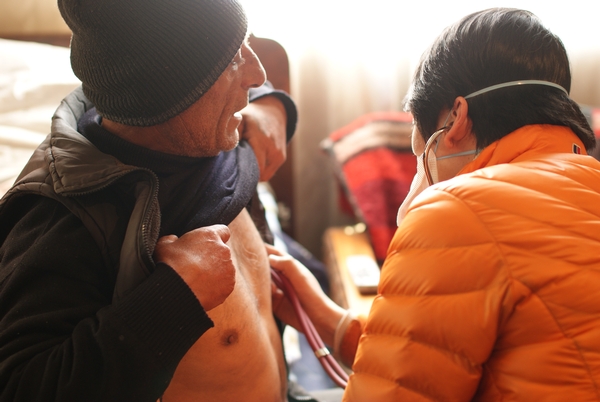 While discussing over-crowding and ‘safe, quality care’, a retired nurse manager said, “It’s all about doing what’s best for the patients.” She told me, “People try to call it patient safety, but it’s just covering your butt.”
While discussing over-crowding and ‘safe, quality care’, a retired nurse manager said, “It’s all about doing what’s best for the patients.” She told me, “People try to call it patient safety, but it’s just covering your butt.”
Motivations to help patients versus protect ourselves start to compete when Medicare runs short of money.
With enough resources, providers can protect themselves and focus on patient benefit. When resources get scarce, providers often have to choose between patient benefit and self-protection.
For example, no one gets criticized for providing ‘really great care’ inside an emergency department or on an inpatient ward. They’re patient-centred. But providers can spend as much time as they want with patients only if they make other patients wait for hours (days!) in the ED waiting room or admitted in ED hallways. Providers can champion ideal care settings – proper rooms, great infection control – only by forcing other patients to endure no bed, no quiet, and no infection control in an ED hallway or waiting room.
No one will fault a nurse or physician for working ‘really hard’ and doing a ‘really good job’ with his patients. Discharge excellence, thorough education, exploration of psychosocial factors; no one can criticize a provider for ‘working hard’ to be patient-centred.
Are We Patient-Centred?
Are we really working hard for patients or are we just covering our butts? Are we avoiding the risk of having to see a new patient in a less-than-ideal setting? Are we aiming for ‘faultless’ care for our patient because we want what’s best for patients, or because we want what’s best for us?
But we’re already at the 25th percentile for length of stay! What more can we do?
Even if care gets trimmed down to the shortest possible, leaving patients to languish in hallways and waiting rooms goes against everything healthcare believes in. Both emergency departments and inpatient services do the same thing. EDs leave patients in waiting rooms; wards leave patients in the ED.
Our system does not have resources to allow providers to give ideal care all the time. Even if you don’t have enough to give patients your best, you can still give them something; letting them languish in the waiting room or ED is egregious.
Healthcare providers can describe their concerns in terms of quality, professionalism or patient benefit without being patient-centred. When we make these comments in the face of unconscionable waits and suffering elsewhere – suffering that we could do something to alleviate – we are just “covering our butt.”
What do you think? What role does self-protection play in our refusal to get patients out of the waiting room or up to the wards?
If you liked this post, please comment or consider signing up for email updates. Thanks for reading!
(The photo comes from an MSF page about Patient-Centred care for TB patients in Armenia. Check it out, too.)


